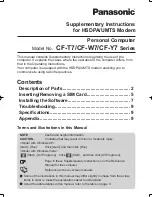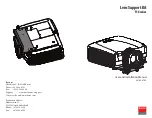
Operating Instructions
38
Treatment of measurement errors on solids
The table below contains typical examples of application-based measurement errors on solids.
A distinction is made between measurement errors in the following states:
•
Constant level
•
Filling
•
Discharging
The figures in the column headed "
Error pattern
" each show the actual level in a broken line and the level
shown by the sensor in an unbroken line.
1
2
Level
time
0
1 Actual level
2 Level indicated by the sensor
Notes:
•
Whenever the sensor shows a constant value, the cause could also be the fault setting of the current
output to "
Hold value
"
•
If the level shown is too low the cause could also be excessive cable resistance.
Error description
Error pattern
Cause
Remedy
1. Measurement
value shows level too
low or too high
- Min. / Max. adjustment incorrect
- Correct Min. / Max. adjustment
- Linearization curve incorrect
- Adjust linearization curve
2. Measurement
value jumps towards
100 %
- The amplitude of the product echo
falls due to the process
- The false signal suppression
process has not been completed
- Complete false signal
suppression process
- The amplitude or location of an
interference echo has changed
(for example condensate or
product deposits); the false signal
suppression is no longer correct
- Find the cause of the changed
interference echo and complete a
false signal suppression process
with condensate, for example
Leve
l
time
0
Level
time
0
7.4 Measurement errors with a constant level










































